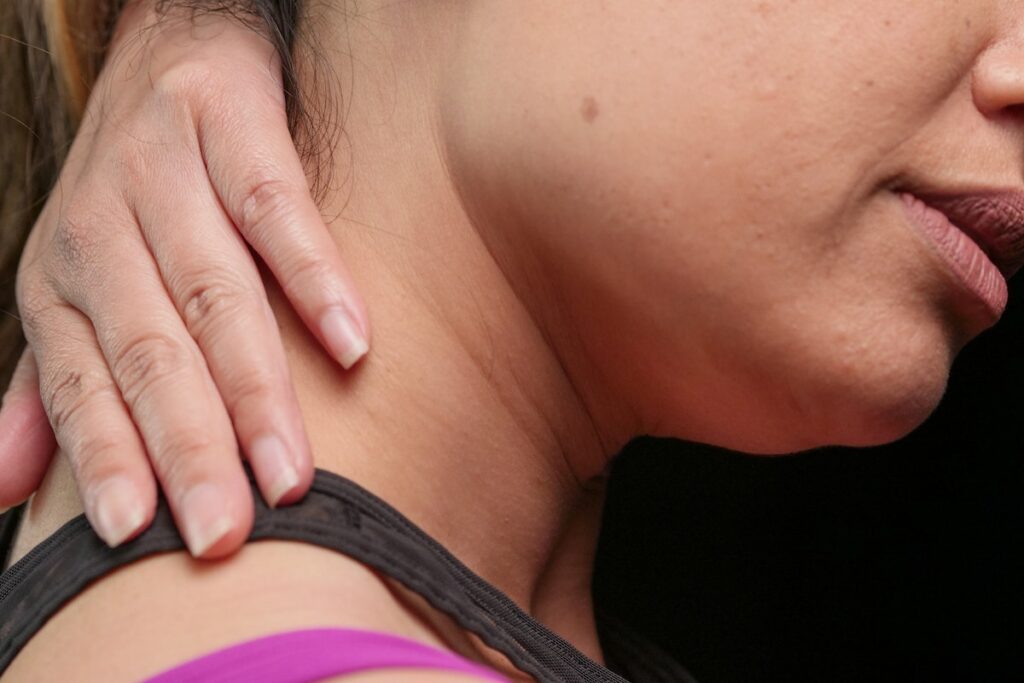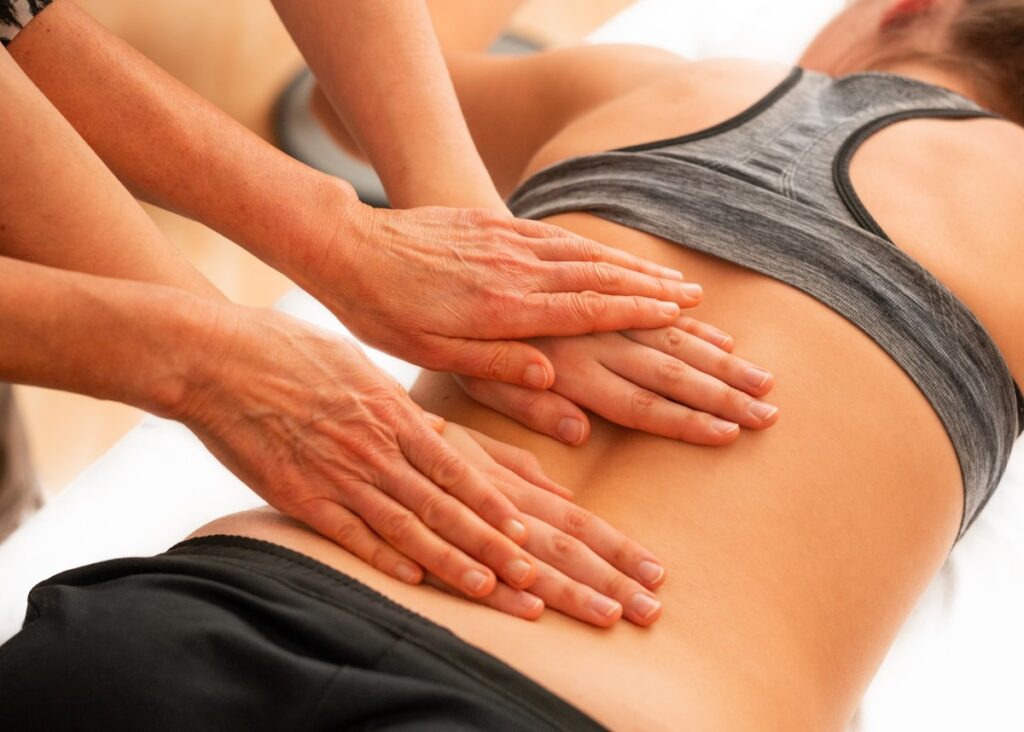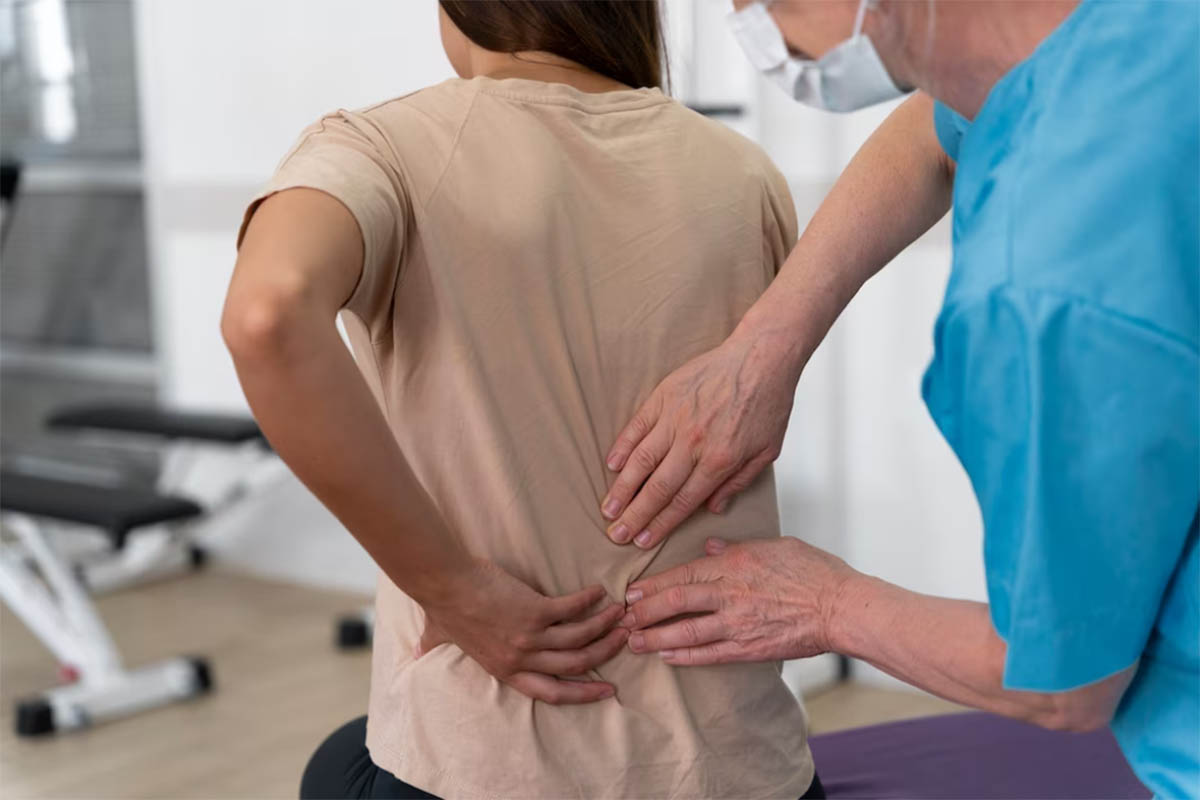Introduction
Lower spine pain, also known as low back pain, is a prevalent health issue that affects people of all ages and backgrounds. The lower spine, or lumbar region, plays a critical role in supporting the upper body, facilitating movement, and protecting the spinal cord. However, due to its complex structure and constant use, the lower spine is susceptible to various injuries, strain, and medical conditions that can lead to pain and discomfort. In this comprehensive 3000-word article, we will explore the causes, symptoms, diagnosis, treatment options, and preventive measures for lower spine pain.
Section 1: Anatomy of the Lower Spine
Understanding the anatomy of the lower spine is essential to comprehend the sources of lower spine pain. The lumbar region consists of five vertebrae (L1 to L5), which are stacked on top of each other and separated by intervertebral discs that act as shock absorbers. Ligaments, tendons, muscles, and nerves surround the vertebrae, providing stability, support, and enabling movement.
Section 2: Common Causes of Lower Spine Pain
Lower spine pain can result from various factors, including:
- Muscle Strain: Overuse, improper lifting, or sudden movements can strain the muscles in the lower back, leading to pain and stiffness.
- Herniated Disc: A herniated or slipped disc can put pressure on the spinal nerves, causing pain and radiating discomfort down the legs.
- Degenerative Disc Disease: Age-related wear and tear on the intervertebral discs can lead to chronic lower spine pain.
- Lumbar Spinal Stenosis: Narrowing of the spinal canal can compress the spinal cord or nerves, resulting in pain, weakness, and numbness in the lower back and legs.
- Osteoarthritis: Degeneration of the facet joints in the lower spine can cause chronic pain and reduced flexibility.
- Spondylolisthesis: A condition where one vertebra slips forward over the one below it, causing lower spine pain and potential nerve compression.
- Sciatica: Compression or irritation of the sciatic nerve, which runs from the lower back down to the legs, can lead to severe pain and numbness in the lower back and legs.
Section 3: Symptoms of Lower Spine Pain

Lower spine pain can manifest with various symptoms, depending on the underlying cause and severity. Common symptoms of lower spine pain include:
- Localized Pain: Dull, aching, or sharp pain in the lower back that may radiate to the buttocks and legs.
- Stiffness: Feeling stiff and unable to move freely in the lower back area.
- Radiating Pain: Pain that travels down the buttocks, thighs, or legs, especially in cases of sciatica.
- Numbness or Tingling: Sensation of numbness or tingling in the lower back, buttocks, or legs due to nerve compression.
- Weakness: Feeling weak in the lower back and legs, making it challenging to stand or walk.
Section 4: Diagnosis of Lower Spine Pain
Accurate diagnosis is crucial for determining the underlying cause of lower spine pain and guiding appropriate treatment. The following methods are commonly used for diagnosis:
- Medical History: The healthcare provider will inquire about the patient’s symptoms, medical history, and any recent injuries or activities that may have contributed to the lower spine pain.
- Physical Examination: A thorough examination of the lower back, assessing range of motion, tenderness, swelling, and signs of inflammation.
- Imaging Studies: X-rays, MRI, or CT scans may be conducted to visualize the lower spine’s internal structures and detect any abnormalities or signs of joint degeneration or herniated discs.
- Electromyography (EMG): EMG tests can evaluate nerve function and identify nerve compression or damage.
- Blood Tests: Blood tests may be performed to check for signs of inflammation or autoimmune conditions.
Section 5: Treatment Options for Lower Spine Pain

Treatment for lower spine pain depends on the underlying cause, the severity of the condition, and the patient’s overall health. Common treatment options include:
- Pain Management: Over-the-counter pain relievers, such as acetaminophen or nonsteroidal anti-inflammatory drugs (NSAIDs), can provide short-term relief from lower spine pain and inflammation.
- Heat and Cold Therapy: Applying heat packs or cold compresses can help reduce inflammation and alleviate lower spine pain.
- Physical Therapy: Targeted exercises and stretches can help strengthen the muscles around the lower back, improve flexibility, and reduce lower spine pain.
- Epidural Steroid Injections: In cases of nerve compression, injections of corticosteroids can help reduce inflammation and relieve lower spine pain.
- Chiropractic Care: Manual adjustments by a chiropractor can provide relief for certain conditions causing lower spine pain.
- Acupuncture: Some individuals find relief from lower spine pain through acupuncture, an alternative therapy that involves the insertion of thin needles into specific points on the body.
- Surgery: In cases of severe joint damage, herniated discs, or spinal stenosis that do not respond to conservative treatments, surgical options such as laminectomy, discectomy, or spinal fusion may be considered.
Section 6: Coping Strategies for Lower Spine Pain
Living with lower spine pain can be challenging, but several coping strategies can help improve quality of life and reduce the impact of chronic pain:
- Activity Modification: Avoiding activities that worsen pain and adopting ergonomic practices can minimize strain on the lower back.
- Exercise and Physical Activity: Engaging in low-impact exercises, such as swimming or yoga, can strengthen the core and lower back muscles, improving stability and flexibility.
- Mind-Body Techniques: Practices such as meditation, deep breathing, and mindfulness can help manage stress and reduce muscle tension associated with lower spine pain.
- Supportive Sleep: Ensure a supportive mattress and pillow that maintain the natural curvature of the spine during sleep.
- Pain Management Techniques: Non-medical pain management techniques, such as guided imagery or biofeedback, can be beneficial in reducing lower spine pain.
- Support Network: Building a strong support network of friends, family, or support groups can provide emotional and practical assistance in coping with chronic pain.
Section 7: Preventive Measures for Lower Spine Pain
While some causes of lower spine pain may not be preventable, several lifestyle choices and precautions can help reduce the risk of developing chronic pain:
- Maintain a Healthy Weight: Excess body weight can place additional stress on the lower spine, leading to pain and discomfort. Maintaining a healthy weight through a balanced diet and regular exercise can reduce the risk of lower spine pain.
- Practice Good Posture: Proper posture, whether sitting, standing, or walking, can help reduce strain on the lower spine and promote a healthy back.
- Lift Properly: Learning and practicing proper lifting techniques can prevent muscle strain and injuries to the lower back.
- Engage in Regular Exercise: Regular physical activity, including cardiovascular exercises and strength training, can strengthen the muscles supporting the lower spine and improve overall spine health.
- Warm-Up Before Physical Activity: Warming up before engaging in physical activities or exercise can prepare the muscles and joints for movement, reducing the risk of injury.
- Maintain a Strong Core: Strengthening the core muscles through targeted exercises can dramatically improve your spinal stability thus reducing lower spine pain.



